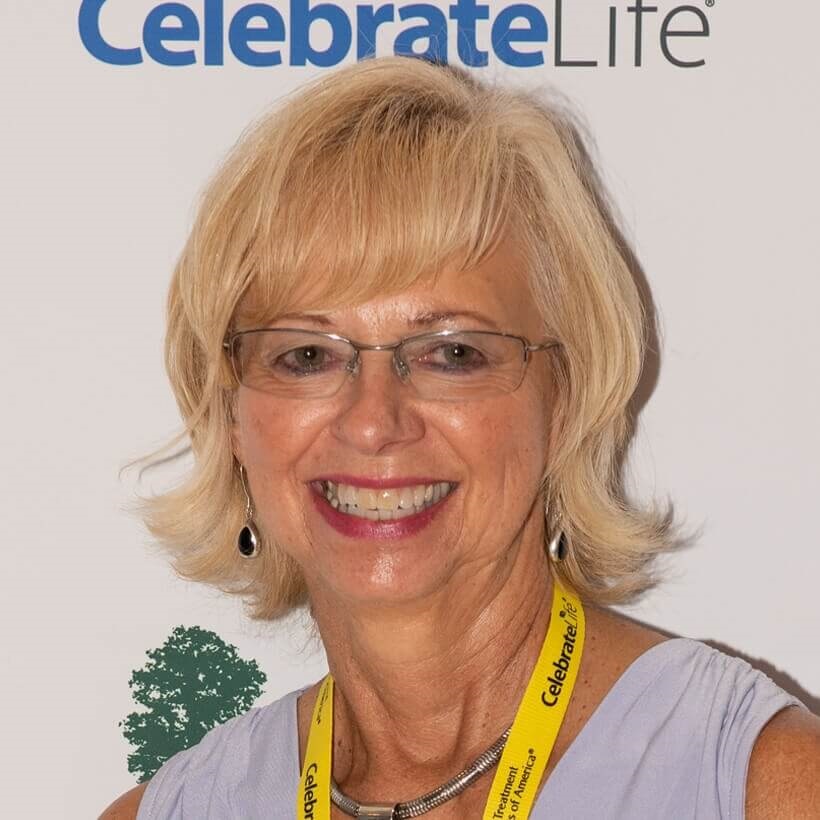

The treatments were difficult to get through at times. My hands became numb and I had very painful mouth sores that lasted throughout chemotherapy. After the six hours of chemotherapy infusion, there were times when I could not make it to my room unassisted. But the truth is, I never had to make it to my room unassisted. There was always someone there to help. My care team did their best to help reduce the pain of the mouth sores and to provide comfort in whatever way they could.
Disclaimer
Listening to the pain
In 2012, when I was 60 years old, I began feeling intermittent pain on my left side. I’d been treated for breast cancer years earlier, but did not know at the time that I had the genetic abnormality known as BRCA 2. This abnormality is associated with pancreatic cancer, as well as breast cancer and ovarian cancer. I had some lower back pain, which I thought was due to driving, and had also lost my appetite.
I spoke with my internist and asked if the pain could be related to my gallbladder. She said no, because the gallbladder is on the right side, not the left. I told her I felt the discomfort under my left rib cage, and she told me that the pancreas is on the left side, but that she thought the pain was likely due to driving. At the time, I was an Account Executive with an Environmental Service company. I covered the Southeast and drove on average 800 to 1,000 miles a week.
Although, she did believe it was nothing to be worried about she did a test for pancreatic enzymes, but the results of this test showed the enzyme levels to be normal, not elevated. She suggested that I see my gynecologist to have my left ovary examined. (I had my right ovary removed when I was in my late 20s and had a solid cyst that engulfed my ovary.) She also recommended having a colonoscopy with a gastroenterologist.
I asked my internist what her next step would be if the examinations of my ovary and colon did not identify the cause of the pain, and she told me if that happened, she would do a CT scan. Eight weeks later, I still had no diagnosis. I went to see my internist again for blood tests and told that the pain had worsened and was now in my stomach, and that I’d lost more weight. She ordered a CT scan for me. Two days later, she called to tell me there were lesions on my pancreas.
The right treatment
I began treatment with an oncologist near my home in South Carolina. I wanted to make sure to get a second opinion. I knew I had just one chance to get the right treatment.
In December of 2012 I called Cancer Treatment Centers of America® (CTCA)* and spoke with Matt Owens, a representative based in Chicago. Within two weeks I was at CTCA in Tulsa for a week of meetings with my Care Team.
The chemotherapy that I’d started in South Carolina continued at CTCA. I had six rounds in total of a regimen known as FOLFIRINOX. The goal of treatment was to shrink the cancer to the point where it was operable. After six rounds of chemotherapy, a PET scan showed that the tumor in the tail of the pancreas was gone, but that there was cancer in the abdominal lymph nodes.
After an additional six rounds of chemotherapy, a PET scan showed no visible signs of cancer. My surgeon, Dr. Greeff, conferred with several other oncologists, who agreed that I would likely benefit from surgery. The procedure was risky, but I had no other health risks like smoking or being overweight, so it made sense to go ahead with it.
In September of 2013, I underwent a 10-hour sub-Whipple procedure, which removed 60 percent of my pancreas, all of my spleen, my left adrenal gland, my left fallopian tube, my right ovary and the covering of my stomach. I also had intraoperative radiation therapy during the surgery.
The treatments were difficult to get through at times. My hands became numb and I had very painful mouth sores that lasted throughout chemotherapy. After the six hours of chemotherapy infusion, there were times when I could not make it to my room unassisted.
But the truth is, I never had to make it to my room unassisted. There was always someone there to help. My Care Team did their best to help reduce the pain of the mouth sores and to provide comfort in whatever way they could.
Life begins again
Today I am feeling great. I have had three additional PET scans since completing chemotherapy and surgery, all of which showed no visible signs of cancer. I return to Tulsa every four months for follow-up visits, and I am preparing for additional preventative surgery.
I can take long walks, go to yoga classes, and work out with free weights. I am starting to think again about the trip to Europe that I put on hold. I meet friends for lunch. And I’m hoping to get my golf swing back to where it was before I was diagnosed.
I had one grandchild before I was diagnosed with pancreatic cancer, and now I have two—the second one was born the day after I finished chemotherapy. My family keeps me motivated—I need to be here to watch my grandchildren grow up—as does my simple love of life. I have a long list of adventures still to come.
* Cancer Treatment Centers of America® (CTCA) is now City of Hope®, working together to expand patient access to personalized, comprehensive cancer care. Because this patient testimonial was written and published before CTCA® and City of Hope joined forces, mentions of legacy CTCA locations have not been updated in the interest of maintaining the patient’s original voice and story details.
